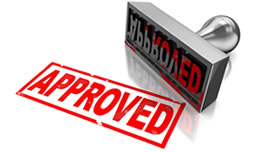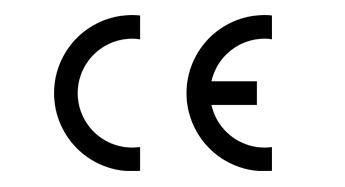CE mark approval for medical devices – an overview
CE marks
Before a medical device can be launched in the European Economic Area (EEA), it must receive a CE mark. The CE mark confirms that the medical device meets certain "essential requirements" of the European General Medical Devices Directive (i.e. that it is fit and safe for the intended purpose). It also shows that the medical device can be freely marketed anywhere in the EEA without further control.
CE marking is mandatory, even if the medical device was manufactured outside the EEA. It is the manufacturer's sole responsibility to obtain and place the CE mark on the product. If the product is imported from outside the EEA, then this responsibility falls to the importer within the community.
Regulatory context
There are currently three key European Directives that govern the requirements for marketing medical devices. Two directives are specific to particular types of device: active implantable devices (e.g. an implantable pacemaker) and in vitro diagnostic medical devices (e.g. an assay to determine a patient's sensitivity to a particular medicine). This article considers the procedure for obtaining a CE mark under the third directive which covers all other types of medical devices (anything from dressings, vascular stents and X-ray machines to spectacles).
Note that in 2012, the European Commission published proposed legislation to replace these Directives. The legislation is expected to be adopted early next year.
First steps – classification and choosing the Conformity Assessment Route
 In order to obtain a CE mark for a medical device, the manufacturer must follow one of four conformity assessment procedures. The particular procedure will depend upon the classification of the medical device. Medical devices may be classified as being Class I, Class IIa, Class IIb or Class III.
In order to obtain a CE mark for a medical device, the manufacturer must follow one of four conformity assessment procedures. The particular procedure will depend upon the classification of the medical device. Medical devices may be classified as being Class I, Class IIa, Class IIb or Class III.
Broadly speaking, devices are categorised according to their perceived associated risks. A number of factors are considered, including how long the device is intended to be in continuous use, whether or not it is invasive and whether or not it contains any medicinal substances. The higher the perceived associated risks of the device, the tighter the controls applied to it via the conformity assessment procedure.
Each manufacturer must classify their medical device, and select the appropriate Conformity Assessment Procedure.
Preparing for the assessment procedure – the technical file
For all classes of device, the manufacturer is required to provide a technical file. The requirements for the technical file will depend upon the Conformity Assessment Procedure selected. As a general rule, the documentation should cover the design, manufacture and intended operation of the product. Ultimately, the manufacturer must provide enough information to demonstrate that the device meets the relevant requirements of the Medical Devices Directive.
Conformity Assessment routes
For Class I devices (i.e. low risk devices), the manufacturer can self-declare the device's conformity with the essential requirements of the Directive. Manufacturers with sterile products and devices with a measuring function must also apply to a Notified Body for certification of the aspects of the manufacture relating to sterility or metrology. Once the manufacturer is satisfied that their device meets all the relevant essential requirements, they must register with the Competent Authority (the MHRA in the UK).
 Manufacturers of Class IIa devices must also declare the device's conformity with the Directive. However, this declaration must additionally be supported by a conformity assessment to be undertaken by a Notified Body (an independent entity that has been designated by the national regulatory body). Manufacturers can choose between the following four conformity assessments:
Manufacturers of Class IIa devices must also declare the device's conformity with the Directive. However, this declaration must additionally be supported by a conformity assessment to be undertaken by a Notified Body (an independent entity that has been designated by the national regulatory body). Manufacturers can choose between the following four conformity assessments:
- an examination and testing of each product (or batch);
- an audit of the production quality assurance system;
- an audit of final inspection and testing; or
- an audit of the full quality assurance system.
If the device is a Class IIb device, a Notified Body must carry out either an audit of the full quality assurance system or an "Annex III examination", coupled with one of the assessments 1, 2 or 3 (above) provided for Class IIa devices. The Annex III examination is a procedure whereby the Notified Body ascertains whether or not a representative sample of the device production satisfies the Directive.
Class III devices are subject to a similar assessment procedure to Class IIb devices. If, however, the manufacturer opts for a Notified Body to carry out an audit of the full quality assurance system then they must also submit a design dossier for examination.
Alternatively the manufacturer may opt for an Annex III examination, but this can only be coupled with either assessment 1 or 2 (above) provided for Class IIa devices.
Final steps to CE mark
 Manufacturers of Class IIa, Class IIb and Class III devices must wait to receive a certificate from the Notified Body. For all devices, once the relevant assessment has been successfully completed (and the certificate received, as applicable) the manufacturer may place the CE mark on their medical device and then put their device on the market.
Manufacturers of Class IIa, Class IIb and Class III devices must wait to receive a certificate from the Notified Body. For all devices, once the relevant assessment has been successfully completed (and the certificate received, as applicable) the manufacturer may place the CE mark on their medical device and then put their device on the market.
The CE mark must be easily visible, readable and permanent. If a Notified Body has been involved in the assessment procedure then the Notified Body's number must also be shown alongside the CE mark.
Exemptions from CE marking
CE marks should not be placed on a medical device if it is intended for clinical investigation, or custom-made. However, separate compliance procedures will need to be followed for these types of devices.
Summary
In order to obtain a CE mark, manufacturers of medical devices will need to:
- classify their device and select the appropriate Conformity Assessment Route;
- prepare a technical file;
- undertake a Conformity Assessment procedure;
- obtain a certificate of conformity from the Notified Body (if applicable); and
- register with the Competent Authority (if not already done).
If you have any questions on this article or would like to propose a subject to be addressed by Synapse please contact us.



